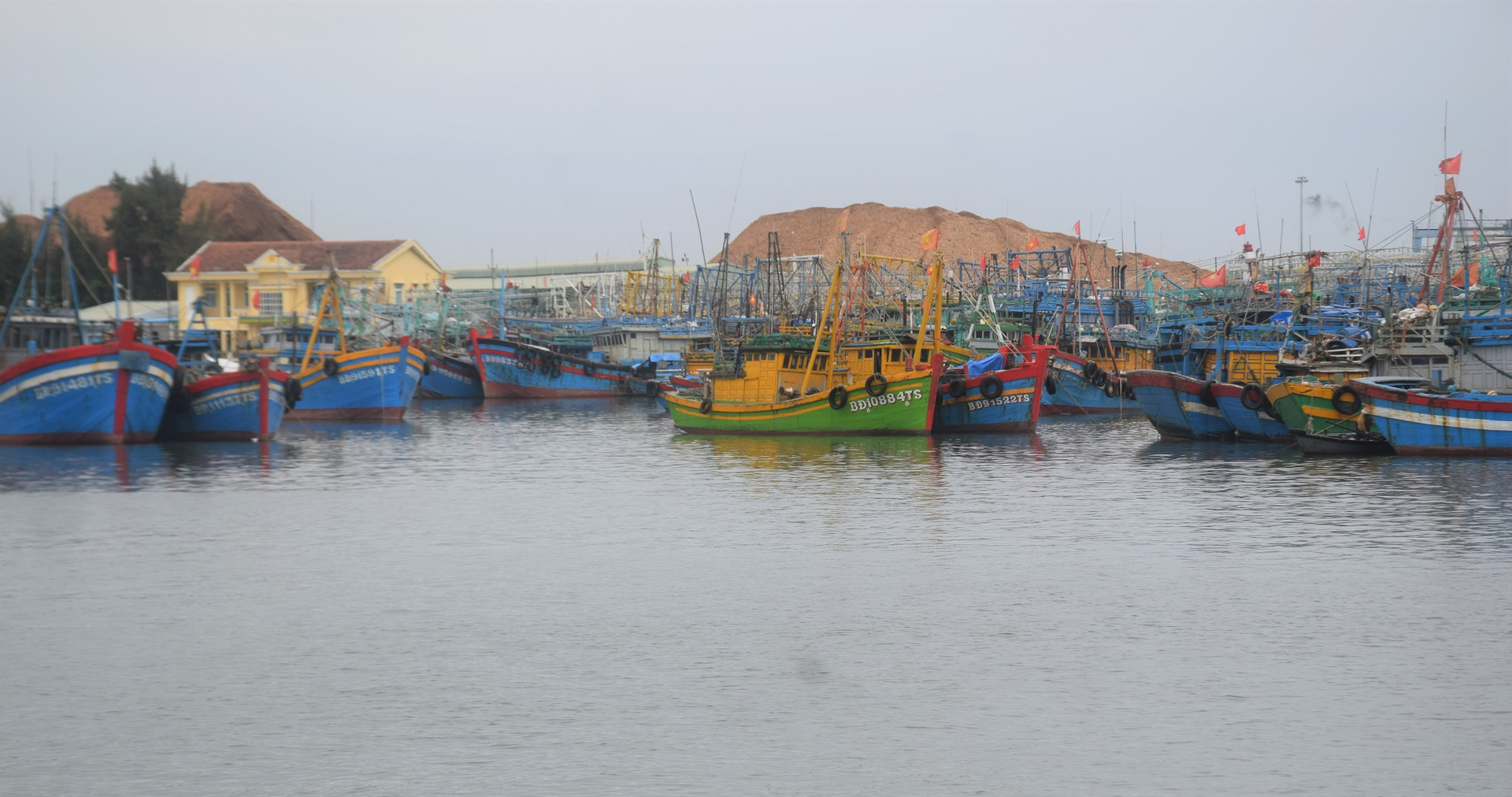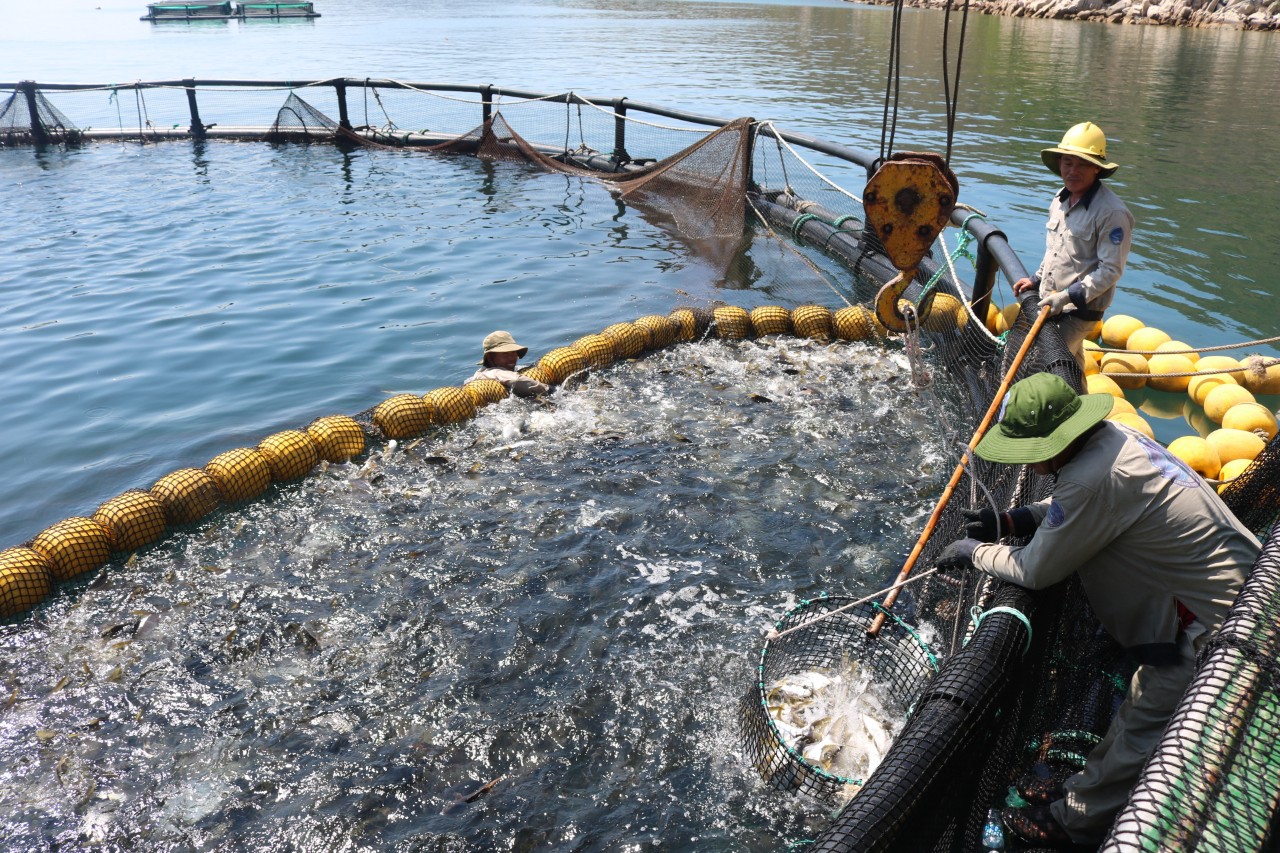May 24, 2025 | 16:24 GMT +7
May 24, 2025 | 16:24 GMT +7
Hotline: 0913.378.918
May 24, 2025 | 16:24 GMT +7
Hotline: 0913.378.918
According to Deputy Minister of Agriculture and Rural Development Phung Duc Tien, in its future development strategy, Vietnam's fisheries industry will reduce exploitation and increase marine farming. Reducing exploitation will lessen pressure on aquatic resources which is already exhausted.
The report of the Vietnam Seaculture Association (VSA) shows that traditional marine farming methods have revealed many shortcomings. Farming inputs are unsustainable while farming conditions are very harsh, not to mention the unexpected occurrence of natural disasters.
Too high aquaculture density leads to serious environmental pollution, especially when marine food is mostly fresh bait. In this context, considering the policy of "reducing exploitation, increasing marine farming", if the industry does not change the traditional farming methods to a more industrial one, the "picture" of marine farming will be even more distorted.

Vietnam has too many fishing vessels compared to its existing aquatic resources. Photo: V.D.T.
Dr. Nguyen Huu Dung, Chairman of VSA, said that Vietnam's potential for marine farming is massive. The water surface area that can be farmed is up to 500,000 ha. The tidal area is 153,300 ha, bays, creeks and island coastal areas are 79,790 ha, and offshore areas are 100,000 ha.
Vietnam's sea has many areas suitable for fish farming thanks to the appropriate depth (20 - 200 m). The flow speed is strong enough (0.10 - 1.0m/s). The location is quite close to the shore and islands (less than 25 nautical miles), convenient for building logistics facilities to store food, nets, and cages.

Vietnam currently has 500,000 hectares of water surface suitable for marine farming. Photo: V.D.T.
“If we take into account all the above factors, Vietnam currently has approximately 1,000 km2 that can be developed for marine farming. With current technology, marine fish farming in the tropics can achieve an average yield of 9,900 to 12,000 tons/km2. Thus, if the entire 1,000 km2 is cultivated, Vietnam will produce 10 million tons of fish each year.
“Just by exporting pangasius, a freshwater fish with an output of 1 million tons per year, Vietnam has earned USD 2.5 billion. If we raise 1 million tons of sea fish each year, the industry can earn USD 10 - 15 billion. If it is 10 million tons, the foreign currency income will be 10 times larger,” said Dr. Nguyen Huu Dung.
Despite such great potential, there is no enterprise involved in offshore marine fish farming. Only less than 10 enterprises raise marine fish in an industrial manner. Among them, Australis Vietnam Seafood Co., Ltd. is the most successful, and the output only reaches 10,000 tons/year.
Tran Cong Khoi, Deputy Director of the Department of Aquaculture (Directorate of Fisheries), believes that marine farming has contributed to changing the economic structure of the fisheries industry. However, most marine farming models in Vietnam are small-scale and fragmented, mainly at the household level with outdated technology, posing many potential risks to the environment.
Vietnam has mastered the technology of sustainable marine farming materials using HDPE cages, so marine farming can now withstand strong waves and winds. This is a must-do for the industry to move towards sustainable development.

Vietnam has mastered the technology of sustainable marine farming materials using HDPE cages. Photo: V.D.T.
As Vietnam's fisheries industry has shifted to "reducing exploitation, increasing aquaculture", the goal in 2023 is to reach 85,000 ha of marine farming areas with 10 million cages and an output of 850,000 tons. In the immediate future, the authorities will implement the Scheme to develop marine farming until 2030 with a vision to 2045 according to Decision No. 1664 of the Government in Quang Ninh, Kien Giang, Phu Yen and Ninh Thuan.
One thing to note is that industrial marine farming still has to face many challenges. The bottlenecks have been identified with a focus on policy, which should be removed so that the development will proceed as planned.

Vietnam will benefit greatly from offshore marine farming. Photo: V.D.T.
Dr. Nguyen Huu Dung listed the problems when the marine industry makes the transition to the industrial direction. “The policies already exist, but so far they have not been implemented. Nowadays, when it comes to developing industrial marine farming, we lack many things, notably sea surface planning, Vietnamese standards on marine farming, registration procedures for facilities and equipment, insurance for marine farming facilities, policies to support the development of marine farming, human resources trained in marine farming, and credit sources to invest in industrial marine aquaculture".
Translated by Samuel Pham

(VAN) The People's Committee of Tra Vinh province has approved an adjustment to the investment policy for the Green Hydrogen Plant project, increasing its area to approximately 52.76 hectares.
![Reducing emissions from rice fields: [2] Farmers’ commitment to the soil](https://t.ex-cdn.com/nongnghiepmoitruong.vn/608w/files/news/2025/05/05/dsc08881jpg-nongnghiep-140632.jpg)
(VAN) Clean rice cultivation model in Thuong Tan commune, Bac Tan Uyen district, is assisting local residents in achieving sustainable agriculture by substantially reducing costs, increasing productivity, and protecting the environment.

(VAN) At the conference to disseminate Resolution No. 68, AgriS introduced its digital agricultural ecosystem and reaffirmed its commitment to accompanying the Government in promoting private sector development and sustainable agriculture.

(VAN) 'Blue Ocean - Blue Foods' initiative is designed to restore marine ecosystems and establish sustainable livelihoods for local communities by cultivating a minimum of 1,000 hectares of cottonii seaweed in the first three years.
/2025/05/21/4642-3-112707_603.jpg)
(VAN) The V-SCOPE project has made direct contributions to three out of six pillars of the Comprehensive Strategic Partnership between Vietnam and Australia.

(VAN) Facing the threat of rabies spreading to the community, Gia Lai province urgently carries out measures to vaccinate dogs and cats on a large scale.

(VAN) Disease-free livestock farming not only protects livestock herds but also stabilizes production and livelihoods for many farmers in Tuyen Quang.